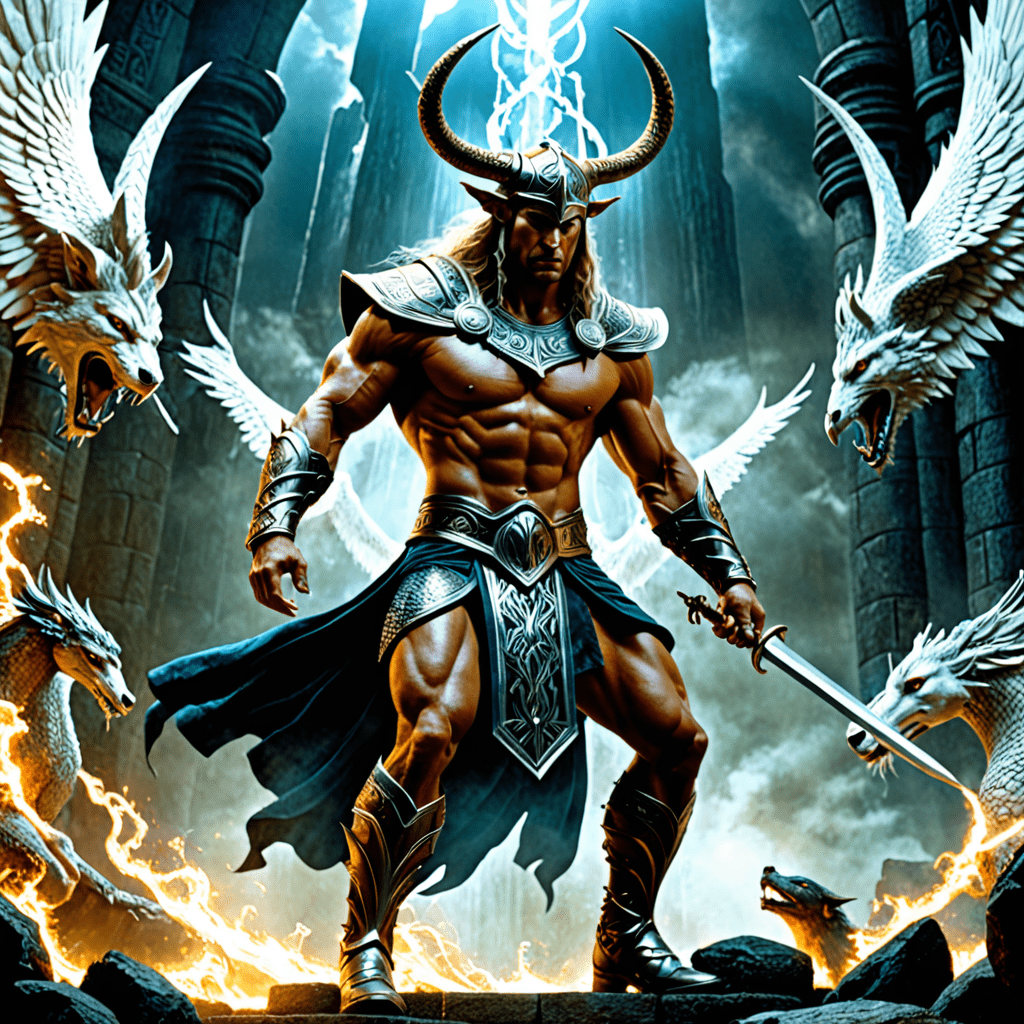Exploring the Temples: Where Ancient Deities Were Worshipped
I. Introduction
Ancient temples have long been regarded as sacred spaces where communities gathered to worship their deities. These structures are not merely architectural feats but are deeply woven into the fabric of the civilizations that built them. Temples served as cultural hubs, centers for worship, and symbols of political power. In this article, we will delve into various ancient temples and the deities that were venerated within their walls, exploring their significance and the rituals that took place there.
II. The Historical Context of Ancient Temples
The evolution of temple architecture reflects the changes in religious practices, societal values, and technological advancements. Ancient temples have seen a remarkable transformation over the centuries, from simple shrines to grand edifices adorned with intricate carvings.
Temples have held cultural significance across various societies, serving as places of worship, community gathering, and political authority. Often, the construction of a temple was a reflection of a ruler’s power and influence, as seen in the monumental structures of ancient Egypt, Greece, and Mesopotamia.
III. Major Ancient Civilizations and Their Temples
A. Egyptian Temples: The Worship of Ra and Osiris
Egyptian temples were monumental structures dedicated to the gods Ra and Osiris, among others. Key architectural features included:
- Massive stone columns
- Pylons that marked the entrance
- Courtyards and sanctuaries
Ritual practices included daily offerings, festivals, and ceremonies intended to maintain ma’at, or cosmic order. The temples were seen as the earthly homes of the gods, where priests performed sacred rites to ensure the favor of the deities.
B. Greek Temples: The Pantheon of Gods
In ancient Greece, temples were dedicated to a pantheon of gods, with notable examples including the Parthenon in Athens and the Temple of Apollo at Delphi. Key aspects of Greek temples included:
- Use of Doric, Ionic, and Corinthian columns
- Elaborate sculptures and friezes
- Integration with the surrounding landscape
Greek temples were not only places of worship but also played a central role in civic life, hosting festivals, athletic competitions, and oracle consultations.
C. Mesopotamian Ziggurats: Houses of the Gods
Mesopotamian ziggurats were unique architectural forms that served as temples. These stepped structures featured:
- Multiple levels with a shrine at the top
- Terraces and staircases leading to the sanctuary
Religious practices involved offerings, prayers, and community gatherings, emphasizing the ziggurat’s role as a focal point for worship and social cohesion.
IV. The Role of Architecture and Art in Worship
Architecture and art in ancient temples were laden with symbolism. The design of temples often reflected the cosmos and the divine order, with careful attention to proportions and orientation.
Sculptures and reliefs adorned temple walls, depicting gods, mythological scenes, and ritual activities. These artistic expressions served not only decorative purposes but also conveyed religious narratives and the power of the deities.
Space within temples was meticulously organized to facilitate rituals, with specific areas designated for different ceremonies and offerings, creating an environment conducive to worship.
V. Sacred Spaces: The Geography of Ancient Temples
The location and orientation of ancient temples were often aligned with natural features such as mountains, rivers, and celestial bodies. This connection to the natural world was vital in many cultures, reinforcing the belief that the divine was present in the landscape.
The concept of sacred geography played a crucial role in ancient cultures, where certain locations were deemed more auspicious for worship. Pilgrimage routes leading to significant temples were established, allowing devotees to engage in religious practices and affirm their faith.
VI. The Deities of Ancient Temples
Across various cultures, numerous deities were worshipped in ancient temples, each with their own myths and stories. Major deities included:
- Ra and Osiris in ancient Egypt
- Athena and Zeus in ancient Greece
- Marduk in Mesopotamia
These deities were integral to the daily lives of the people, influencing governance, agriculture, and social norms through their myths and rituals.
VII. Rituals and Ceremonies in Ancient Temples
Ancient temples were the sites of various rituals, including:
- Daily offerings to the gods
- Seasonal festivals celebrating agricultural cycles
- Rites of passage for individuals and communities
Priests and priestesses played essential roles in temple ceremonies, performing rituals to appease the gods and ensure the community’s well-being. Their status often reflected the temple’s importance within society.
VIII. The Decline of Ancient Temples and Their Modern Legacy
The decline of temple worship can be attributed to various factors, including the rise of monotheistic religions, political changes, and social transformations. Many ancient temples fell into disrepair or were repurposed for different uses.
Despite this decline, the preservation and restoration of ancient temples have become significant endeavors, allowing us to appreciate their historical and architectural value. The design elements of these temples continue to influence modern architecture, inspiring contemporary buildings worldwide.
IX. Contemporary Perspectives on Ancient Temples
Today, ancient temples are viewed as vital archaeological sites that provide insight into past societies. They are studied for their architectural innovations, artistic expressions, and the religious practices that once defined the lives of ancient peoples.
Efforts to conserve and protect these sites reflect a broader recognition of their cultural heritage, ensuring that future generations can appreciate the rich history and significance of ancient temples.



